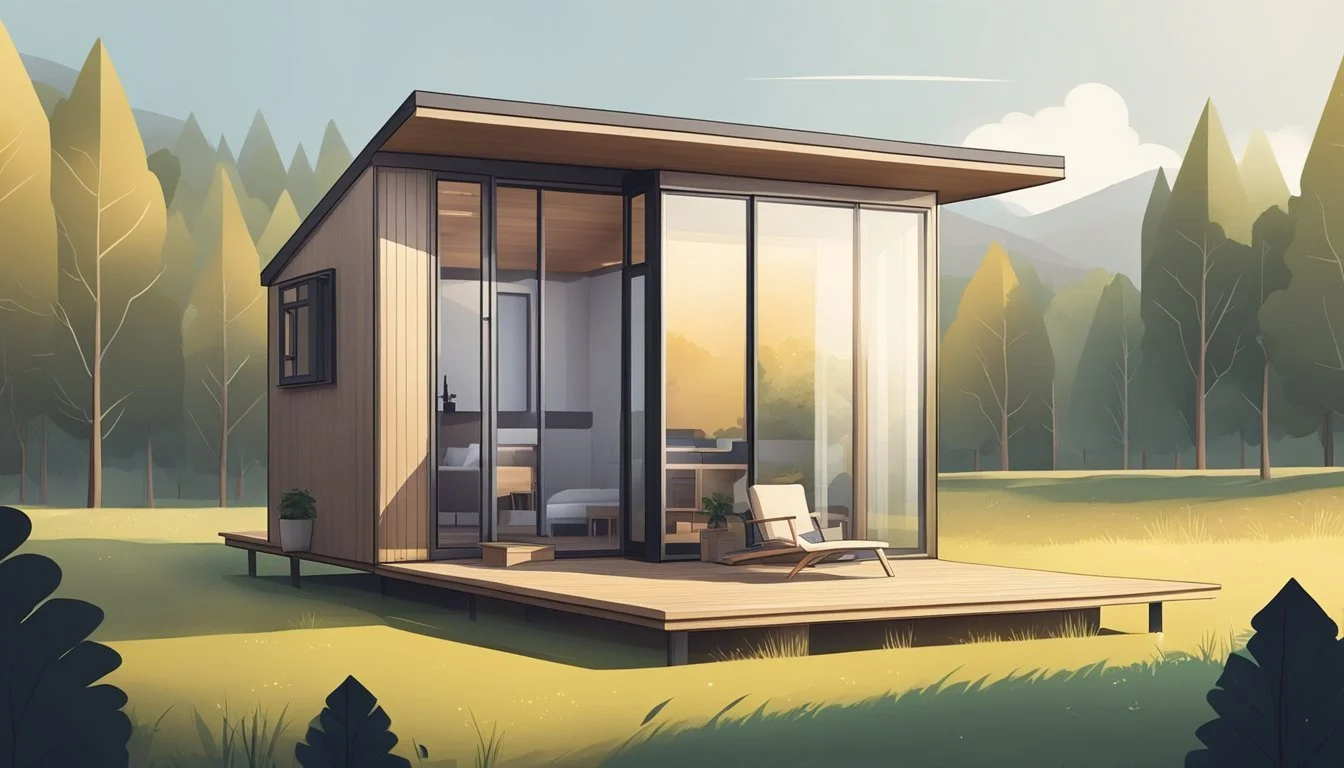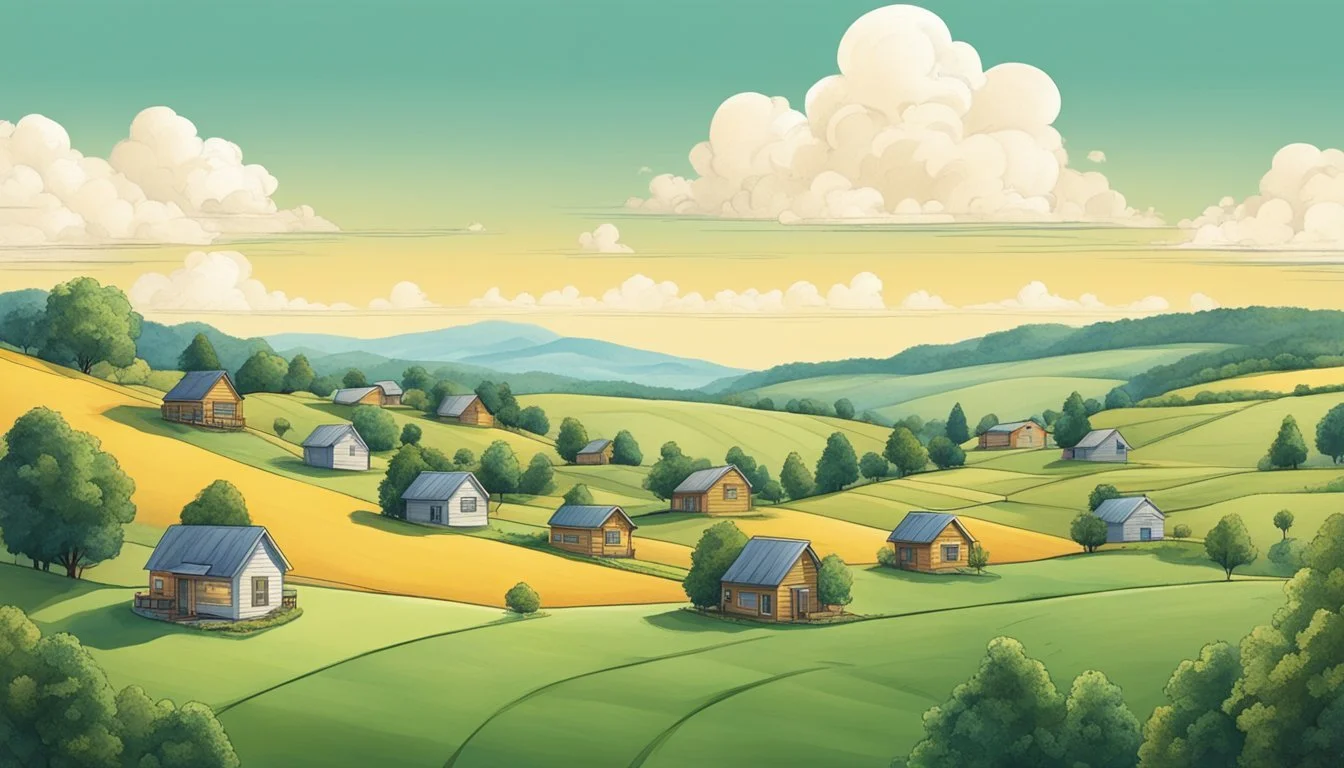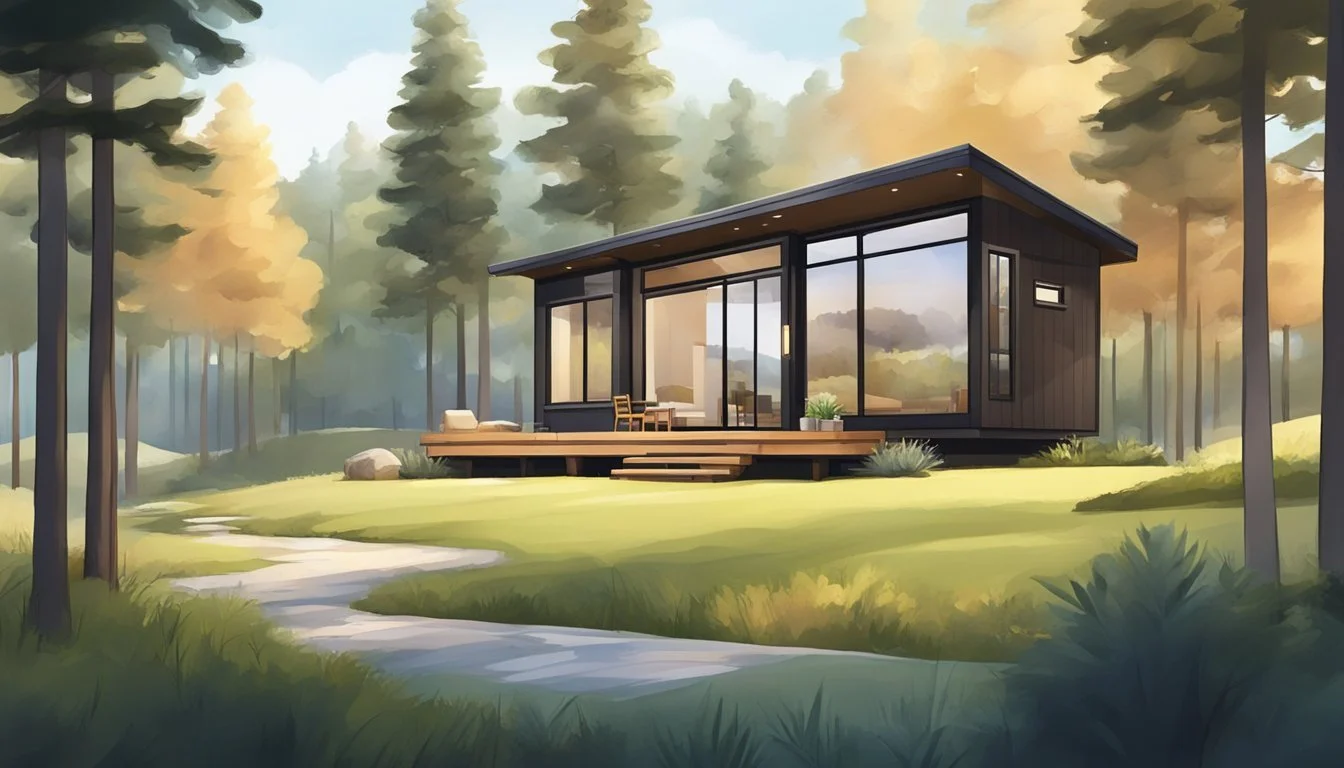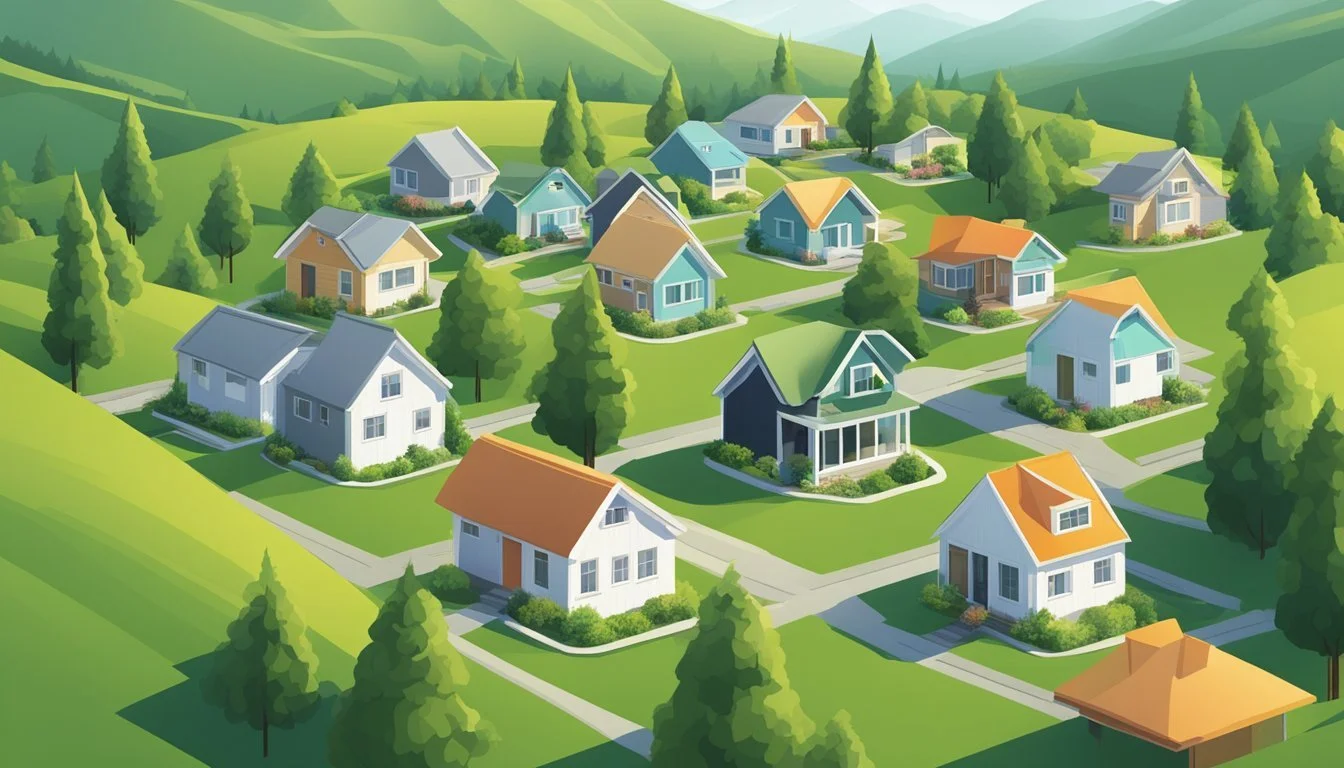Free Land for Tiny Homes
Kickstart Your Minimalist Lifestyle
Embarking on the minimalist journey of living in a tiny home is a pursuit of simplicity and freedom. However, securing land for your tiny house can be one of the most significant challenges in this lifestyle. Fortunately, there are avenues for obtaining free land for tiny homes through various programs and opportunities. It’s essential to understand where to find these opportunities and what steps to take to make them a reality.
Exploring free land programs in the US and Canada, adverse possession, and intentional communities or eco-villages can provide viable options. These methods allow tiny house enthusiasts to secure parcels of land without traditional purchase costs. Connecting with tiny home communities and investigating local initiatives can offer pathways to suitable land.
Zoning laws and local regulations must be navigated to ensure compliance. By exploring different options and understanding the legal landscape, those interested in minimalist living can find the ideal spot to call home. This guide will delve into the practical steps required to find and secure free land for your tiny home, setting you on the path to a simplified and rewarding lifestyle.
Understanding Tiny Homes and Minimalism
Tiny homes exemplify minimalist living by focusing on simplicity, efficiency, and intentional choices. This section explores the concept of tiny living, its advantages, and how to determine if it suits your lifestyle.
Concept of Tiny Living
Tiny homes range from 100 to 400 square feet in size, designed to maximize space efficiency. The philosophy behind tiny living embraces the idea of owning less and living more intentionally. Minimalism is integral to this lifestyle, emphasizing the importance of focusing on what truly matters. This trend is growing as people seek to reduce environmental impact and lead more sustainable lives.
Key Points:
Size: Typically between 100-400 sq ft
Focus: Efficiency and intentional living
Goal: Sustainability and reduced environmental impact
Advantages of a Tiny Home
Tiny homes offer numerous benefits, including financial savings and a reduced carbon footprint. Owners often experience lower utility costs and minimal maintenance expenses. The environmentally friendly nature of tiny homes appeals to those seeking a sustainable lifestyle. Additionally, living in a smaller space encourages decluttering and reducing unnecessary possessions.
Key Points:
Financial Savings: Lower utility and maintenance costs
Environmental Benefits: Reduced carbon footprint
Decluttering: Fosters a minimalist approach to possessions
Assessing Your Tiny House Readiness
Before committing to tiny house living, it's essential to evaluate personal readiness. Consider factors like lifestyle preferences, adaptability to small spaces, and willingness to downsize. Prospective owners should also research zoning laws and building codes in their desired locations, as regulations vary widely. Reflecting on these aspects can help determine if a tiny house is the right fit.
Key Points:
Lifestyle Compatibility: Comfort with small living spaces
Downsizing: Willingness to reduce possessions
Regulations: Awareness of zoning laws and building codes
By understanding tiny homes and minimalism, individuals can better assess whether this lifestyle aligns with their values and needs.
Discovering Available Land
Finding the right piece of land for your tiny home can be challenging. Key steps include using real estate platforms, seeking free or low-cost land opportunities, and evaluating the suitability of the land for tiny homes.
Navigating Real Estate Platforms
Real estate platforms like Zillow, Trulia, and Land Watch offer abundant listings for available land. These websites allow users to filter searches by location, price range, and land type, helping to identify suitable options quickly.
Utilizing Craigslist can also be beneficial, as individual landowners frequently sell parcels of land directly. Land listings are often detailed, including price, size, and location specifics, making these platforms a valuable resource for anyone looking to purchase land.
Identifying Free or Low-Cost Land Opportunities
Some regions offer free or low-cost land to promote development and attract newcomers. These opportunities are often found in more rural areas where growth is encouraged. Farmers seeking to lease or sell unused portions of their land might also offer these types of deals.
Networking within tiny home communities and consulting real estate agents can uncover additional opportunities. Keep an eye on local government programs that might provide incentives for developing small, eco-friendly homes.
Evaluating Land Suitability for Tiny Homes
Not all land is created equal, especially for tiny homes. Key factors to consider when evaluating land include zoning laws, accessibility, utilities, and soil quality.
Zoning restrictions can vary greatly, so checking local codes is crucial. Accessibility to roadways and utilities like water and electricity will affect livability. Soil quality must also be assessed, particularly if you plan on growing your food or making other agricultural use of the land. A thoughtful evaluation ensures the land fits your long-term needs and lifestyle.
Zoning Laws and Building Regulations
Navigating zoning laws and building regulations is crucial for anyone looking to establish a tiny home. These regulations can vary significantly by location and impact where a tiny home can be legally placed and how it must be built.
Understanding Local Zoning for Tiny Houses
Local zoning laws determine how specific areas of land can be used. These laws are established by municipal or county governments and often categorize land into zones such as residential, commercial, or agricultural.
For tiny homes, zoning regulations may dictate whether they can be considered Accessory Dwelling Units (ADUs). An ADU is a smaller, secondary dwelling located on the same lot as a single-family home. It's important to check if your intended location recognizes tiny homes as ADUs and what restrictions apply.
Some areas have specific requirements for minimum size and types of structures allowed. Potential tiny house buyers must ensure their plans adhere to these local guidelines to avoid legal issues.
Acquiring the Right Permits
Obtaining the necessary building permits is a critical step in the process. These permits ensure that the construction meets safety and quality standards as required by the local building codes.
First, one should contact the local building department to understand the specific permit requirements. This might include site plans, construction details, and utility hookups. Each jurisdiction will have its unique set of documentation and inspection processes.
Builders should also be aware of fees associated with these permits. These can vary widely but must be factored into the overall project budget. Skipping the permit process can lead to significant fines and the potential requirement to dismantle non-compliant structures.
Restrictions and Compliance
Compliance with local building codes is mandatory for all construction projects, including tiny homes. These codes cover everything from the structural integrity of the building to electrical wiring and plumbing systems.
In some areas, tiny homes must comply with the same standards as traditional homes, while others may offer more relaxed regulations. Builders must be diligent in understanding if their tiny home must be on a permanent foundation or if it can remain on wheels.
Fire safety standards, accessibility laws, and energy efficiency regulations may also apply. Non-compliance can result in penalties, so thorough research and planning are essential.
To summarize, navigating zoning laws and building regulations can be complex, but with the right preparation, establishing a tiny home on your land is a feasible and rewarding endeavor.
Designing Your Tiny Home
Designing a tiny home requires thoughtful consideration of functionality, sustainability, and innovation. Integrating these elements helps in creating a space that is not only livable but also efficient and environmentally friendly.
Selecting a Functional Layout
A functional layout is critical in a tiny home to maximize limited space. Prioritize multi-purpose furniture like fold-out tables and sofa beds. Use vertical space with shelving and lofts for sleeping or storage.
Consider an open floor plan to facilitate movement and create an illusion of spaciousness. Ensure areas like kitchen, bathroom, and living spaces are easily accessible and logically placed to enhance usability.
Each zone should serve multiple purposes whenever possible. For instance, a kitchen countertop can also act as a workspace.
Choosing Sustainable and Eco-Friendly Materials
Opt for sustainable materials such as bamboo flooring or reclaimed wood to reduce environmental impact. These materials often have long lifespans and contribute to healthier indoor air quality.
Invest in effective insulation like wool or cotton batting to enhance energy efficiency. Sustainable insulation materials also help maintain a comfortable indoor temperature, reducing reliance on heaters or air conditioners.
Consider low-VOC paint and finishes to minimize chemical exposure. Using recycled materials for furnishings and fixtures can also be both cost-effective and environmentally friendly.
Innovations in Tiny House Design
Embrace innovations like modular design to allow flexibility and adaptability in your tiny home. Modular components can be reconfigured easily, offering various layout possibilities.
Incorporate smart technology for energy management and security systems, such as programmable thermostats and efficient lighting solutions. Smart homes improve functionality while reducing energy consumption.
Creative storage solutions are vital. Integrate hidden storage spaces under stairs or inside furniture to keep your home clutter-free. Using sliding doors instead of traditional doors saves space and adds to the efficiency of the home layout.
By focusing on these elements, tiny home dwellers can enjoy a comfortable, sustainable, and innovative living experience.
Cost Considerations and Funding
Securing land for your tiny home involves various financial aspects, from initial purchase to ongoing maintenance. It's crucial to understand your budget, available financial assistance, and alternative funding methods.
Setting Realistic Budgets
Starting with a clear budget is essential. This should cover not only the cost of land but also utilities, legal fees, and any additional permits required. When setting a budget, include initial expenses such as land purchase, setup costs for utilities, and labor costs.
Here's a breakdown of potential costs:
Expense Estimated Cost Range Land Purchase $1,000 - $50,000+ Utility Setup $1,500 - $5,000 Legal Fees/Permits $500 - $2,000 Labor Costs $20 - $50 per hour
Adjust these figures based on your location and specific needs.
Exploring Grants and Loans for Tiny Homes
Various grants and loans can help finance your tiny home project. Look into federal and state grants designed for sustainable living and housing innovation. Non-profits and environmental organizations often provide funding options for eco-friendly housing projects.
Example resources:
HUD Grants - For low-income housing projects.
Local Government Grants - Offered in certain regions boosting alternative housing.
Securing a low-interest loan from your bank or a credit union could be another viable financing option. Always research the terms and conditions thoroughly to ensure they fit your financial plan.
Crowdfunding Your Tiny Home Project
Crowdfunding has become a popular method for funding tiny home projects. Platforms like Kickstarter, GoFundMe, and Indiegogo can help you raise funds by pitching your project to a wide audience.
Steps to successful crowdfunding:
Create a compelling story.
Use engaging images and videos.
Set a clear, realistic financial goal.
Offer incentives for different funding levels.
Typical rewards might include personalized thank-yous, updates on the build progress, or even small tokens like branded merchandise. Reaching out to the community can provide not only financial support but also a loyal following for future projects.
Off-Grid Living Essentials
To live off-grid successfully in a tiny home, essential elements include access to sustainable power sources and strategies to maintain self-sufficiency. This involves using solar energy, efficient appliances, and effective waste management systems.
Solar Energy and Sustainable Power
Solar energy is a primary consideration for off-grid living. Solar panels can provide a steady and renewable power source.
Install solar panels on the roof of the tiny house or in the surrounding area to capture sunlight. This setup usually requires a battery storage system to store excess energy for use at night or during cloudy days.
Energy-efficient appliances further reduce consumption. Choosing devices with Energy Star ratings ensures lower power usage. Compact and multi-functional appliances are ideal for tiny homes.
Backup generators, particularly those powered by propane or diesel, can be useful during periods of low sunlight. Establishing a well-rounded power system helps ensure a consistent and reliable energy supply.
Maintaining Self-Sufficiency
Living off-grid also entails maintaining self-sufficiency through effective management of resources. Rainwater harvesting systems collect and store rainwater for household use. These systems include gutters, storage tanks, and filtration units to ensure water safety.
Composting toilets serve as an efficient waste management solution. They convert waste into compost that can be safely used as fertilizer for gardens. This reduces the need for septic systems and municipal sewage connections.
Wood stoves offer a sustainable heating solution, using readily available wood as fuel. They provide warmth and can also be used for cooking.
Implementing these essentials allows for a more independent and eco-friendly lifestyle, reducing reliance on external utilities.
Implementing Tiny House Infrastructure
When setting up tiny house infrastructure, focus on essential utilities and ensuring ease of movement. Proper planning is crucial for functionality and comfort.
Utility Connections and Amenities
Connecting utilities is a key step in establishing a functional tiny house. Water supply involves either connecting to a municipal system or using a well. Installing an efficient water conservation system can help reduce costs and environmental impact.
Sewage systems are equally important. Options include connecting to a septic tank, composting toilets, or using a sewer hookup. Each choice has different installation costs and maintenance needs. Make sure the system complies with local regulations.
For electricity, consider solar panels or connecting to the grid. Solar panels can reduce ongoing costs but involve an initial investment. Propane or electric systems can be used for heating. Evaluate the potential benefits and costs of each based on your specific location and needs.
Accessibility and Mobility Considerations
Accessibility is crucial for both day-to-day living and emergencies. Ensure that the tiny house site has easy road access for vehicles. This facilitates transportation of building materials and future mobility if relocation is needed.
Pathways and ramps should be designed to accommodate all residents, including those with mobility challenges. Think about the placement of entrances and ensure they are wheelchair accessible if necessary.
For long-term sustainability, include features like elevated walkways to avoid water damage. Consider the location of amenities and access to services such as groceries and healthcare. Proximity to these amenities can enhance the livability of the area.
The Tiny House Community and Legalities
Establishing a tiny house within a community requires understanding both the social environment and the legal framework. Below we discuss how to join a tiny house community and navigate the prevalent legal considerations.
Becoming Part of a Tiny House Community
Joining a tiny house community often involves identifying groups or neighborhoods with similar values. Many tiny house communities emphasize sustainability, shared resources, and a close-knit social environment. They may function as intentional communities where residents collaborate on maintaining common spaces and organizing events.
Homesteads can sometimes provide opportunities for tiny house living, especially in rural areas. Families or groups who already own land might welcome additional members to share resources and labor. Engagement in these communities often requires a sense of commitment and compatibility with existing members.
Additionally, some established communities might have specific deeds or covenants restricting home sizes or requiring adherence to certain lifestyle practices. Prospective members should thoroughly research existing community rules and expectations before committing to join. Online forums and social networks are excellent resources for finding and connecting with these communities.
Legal Considerations and Community Standards
Legal requirements for tiny homes vary widely, and understanding them is crucial. Local zoning laws often dictate where tiny homes can be placed. Tiny houses on wheels (THOWs) are frequently classified as RVs, which may only be allowed in certain zones or require specific permits for long-term habitation.
Tiny houses on foundations are often considered Accessory Dwelling Units (ADUs) and must comply with local building codes. Municipal regulations might specify minimum square footage, utility hookups, and safety standards that must be met. Engaging with local government officials or a knowledgeable attorney can ensure compliance with these laws.
Communities may also have standards that govern aesthetics, construction practices, and noise levels. These standards are often designed to maintain harmony within the neighborhood but can impact the design and placement of tiny homes. Proactively engaging with local authorities and community leaders can help address potential legal hurdles and foster acceptance of tiny house developments.
Sustainability and Environmental Impact
Tiny homes present an opportunity to embrace sustainability and reduce one's environmental footprint. Through thoughtful design and the use of eco-friendly practices, tiny home living can significantly impact our planet positively.
Reducing Your Environmental Footprint
Tiny homes use considerably fewer resources than traditional homes. According to The Tiny Life, they consume 40-75% less energy. This reduction is achieved through smaller living spaces, lower heating and cooling needs, and more efficient use of energy.
Building materials play a crucial role. Using recycled or eco-friendly materials in construction not only minimizes waste but also reduces the carbon footprint linked to manufacturing new materials.
Sustainability extends to water consumption. Simple steps such as installing low-flow showerheads and composting toilets can drastically cut down water use. By incorporating these practices, tiny home dwellers contribute to a more sustainable lifestyle and positively impact the environment.
Employing Eco-Friendly Practices in Tiny Living
Incorporating eco-friendly practices is essential for those who choose tiny home living. Utilizing solar panels can generate renewable energy, lessening dependence on non-renewable sources. Solar energy harnesses the power of the sun, offering a clean and sustainable power solution for tiny homes.
Rainwater harvesting systems can be installed to collect and utilize rainwater for various household needs. This not only conserves water but also reduces the strain on local water supplies. Insulating the tiny home with environmentally friendly materials ensures efficient energy use, keeping the home warm in winter and cool in summer.
Selecting appliances that are energy-efficient further contributes to reducing the overall environmental impact. Look for appliances marked with the Energy Star rating, which guarantees lower energy consumption. Additionally, integrating sustainable practices such as composting and recycling helps manage waste effectively.
By adopting these measures, tiny living becomes a model for sustainable living, balancing comfort with environmental responsibility.
Homesteading and Tiny Living
Homesteading and tiny living go hand-in-hand by promoting sustainability, self-sufficiency, and a simpler lifestyle. Many have found combining these two approaches offers a well-rounded experience, integrating food production with minimalist dwelling.
Developing a System for Food Self-Reliance
A core element of homesteading is cultivating a reliable food system. Gardens are an excellent starting point, allowing residents to grow vegetables, herbs, and fruits. Even with limited space, methods like raised beds or container gardening can maximize yields.
Chickens are another valuable asset. They provide eggs, help control insects, and their manure can be used as fertilizer. Fruit trees further enhance self-reliance, offering fresh produce and requiring minimal maintenance once established.
Having a combination of these elements ensures a steady supply of food and promotes a closer connection to nature. Additionally, honey from bees, homegrown herbs for teas and remedies, and small dairy operations like goats can expand self-sufficiency efforts.
Combining Tiny Homes and Homesteading
Tiny homes complement homesteading by minimizing energy use and maximizing resource efficiency. These homes often come with eco-friendly features such as solar panels and rainwater collection systems, which align with homesteading principles.
Due to their mobility, tiny homes can be placed in a variety of settings, from urban backyards to rural plots. This flexibility allows homesteaders to choose optimal locations for their gardens and livestock. Building regulations and zoning laws should be reviewed to ensure the seamless integration of a tiny home on the chosen homestead land.
Combining a tiny home with a homestead merges efficient living spaces with the ability to produce one's own food, striking a balance between minimalism and self-reliance.









